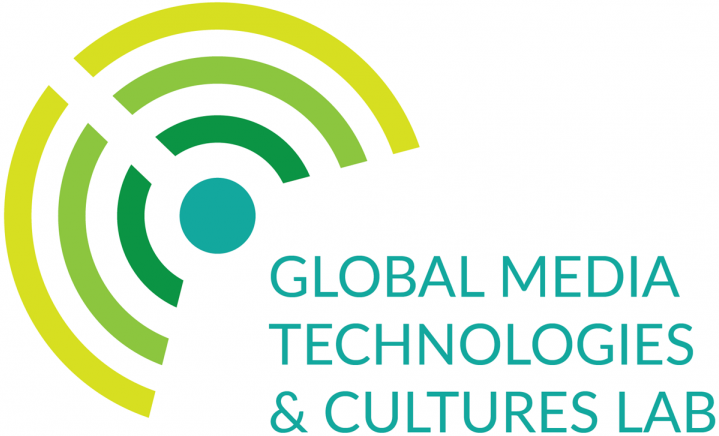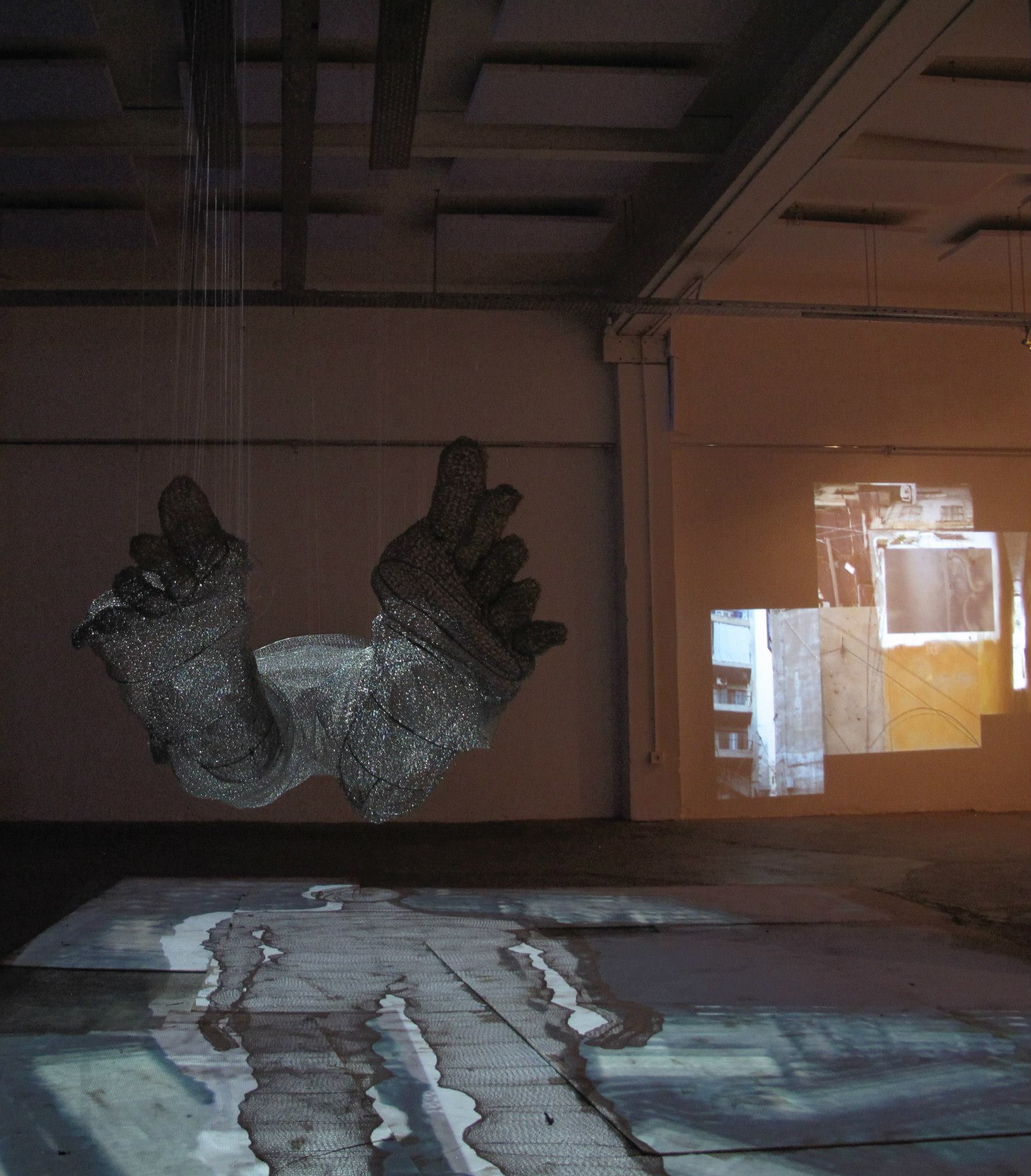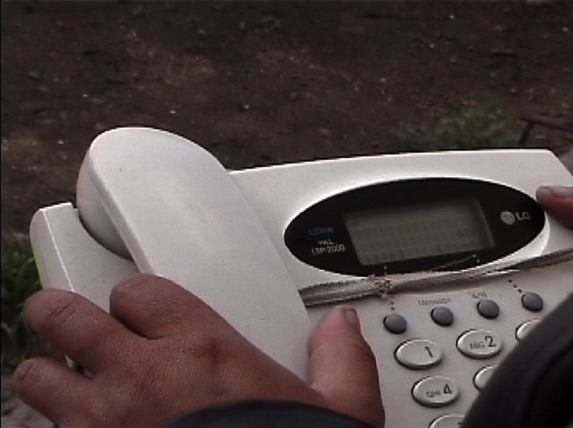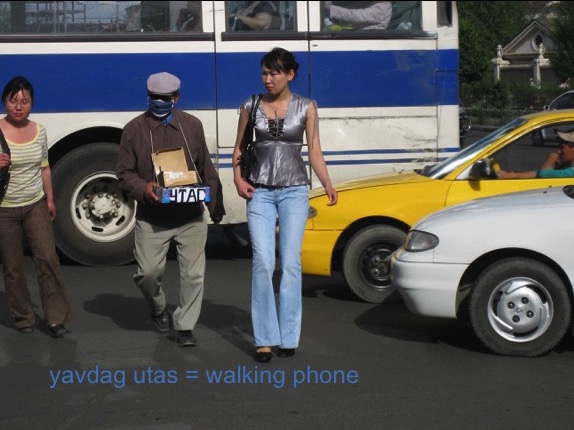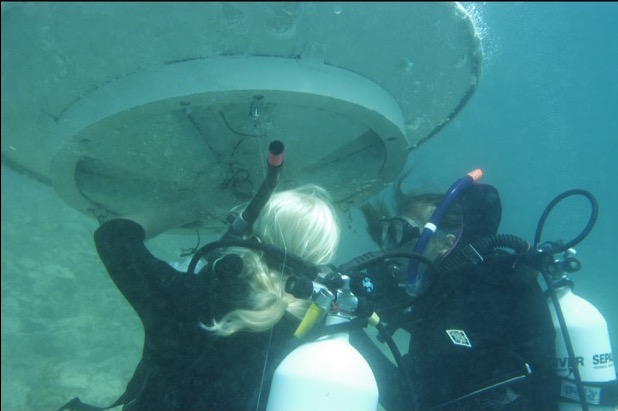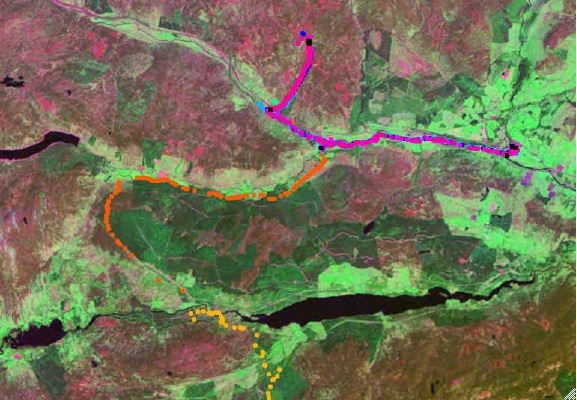Published on February 9th, 2017
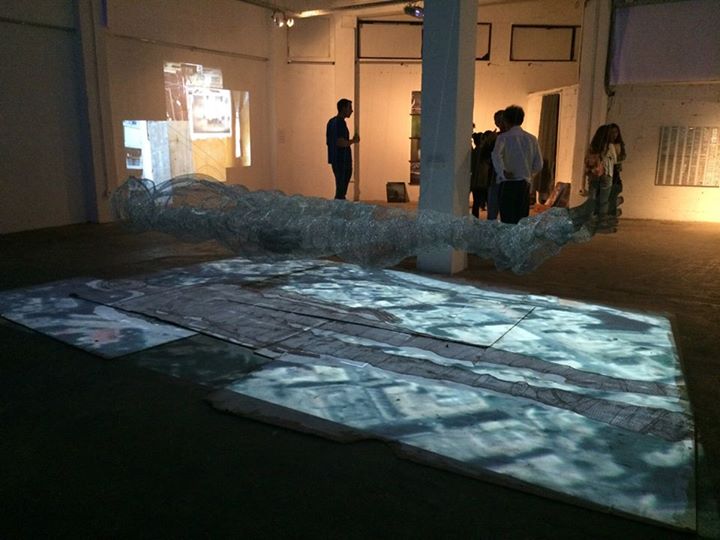
Spectral Configuration
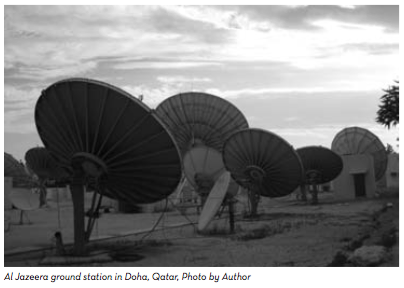
Satellite, Border, Footprint
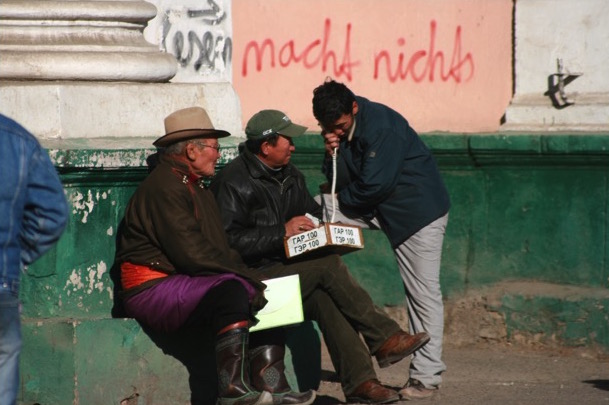
Roaming

Postwar Footprints
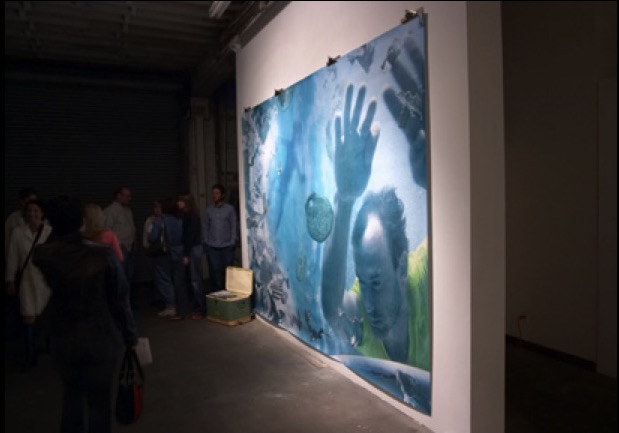
Loom

Experiments in Satellite Media Arts
-

Spectral Configuration
Spectral Configuration, multimedia installation with Elie Mouhanna, Marc Abou Farhat, Tadej Fius and Miha Vipotnik, “Vertical Collisions” Exhibition, Station Gallery, Beirut, Lebanon, May 2015. // Spectral Configuration explores the vertical politics and mediated materialties of drone warfare. Its centerpiece is a massive, four-meter long metallic body hand crocheted out of aluminum wire. How long does it take to make a body? How long does it take to destroy one? As it hovers in mid air, the wiry surface of this colossal corpse turns translucent as multiple media projections made from leaked military-industrial complex video flicker around and upon it. These electromagnetic projections envelop the silvery drone body within the luminous footprint of world history and militarization, cycling through a series of spectral suspects, framed targets, and aerial strikes. As the Spectral Configuration soars above, it not only senses light and heat waves from afar; it reconfigures and remediates life on earth. Circumnavigating the earth on an endless flight path, the installation is designed to alter our disposition to the sky, the ground beneath our feet, and how we feel in our skin. -

Satellite, Border, Footprint
Satellite, Border, Footprint, invited workshop leader, collaborative satellite media art projects, HMKV, Dortmund, Germany, 2010. // "Spotting the Satelite Dish: Populist Approaches to Infrastructure." EXCERPT: Most of us are socialized to know very little about the infrastructures that surround us in everyday life, whether electrical systems, sewer pipes, or broadcast networks. not only are we socialized to be unaware of such systems, these infrastructures are often designed purposefully to be invisible, to be integrated with the built environment, whether submerged underground, covered by ceilings and walls, or camouflaged as “nature.” Further, since infrastructures stretch across vast territories they are impossible to perceive in their entirety and are often difficult to describe. they are most frequently represented as flowcharts. Much has been written about the social history of transportation and communication infrastructures. Studies by Wolfgang Schivelbush, Harold Innis, James Carey, and others, have helped us to understand the railway, telegraph, and broadcasting in relation to structures of industrialization and modernity. While this work remains vital, I want to pursue a more partial, node or object- centered, knowledge-oriented approach to the study of infrastructure, one that engages with such systems from a more populist perspective. here we might access the work of cultural studies scholar John Fiske and consider what it might mean to study infrastructure from a perspective of “popular knowledges” and “techno-struggles.” As Fiske reminds us, “the multiplication of communication and information technologies extends the terrains of struggle, modifies the forms struggle can take, and makes it even more imperative that people grasp the opportunities for struggle that the multiplying of technologies offers." -

Roaming
Roaming, multimedia installation and research publication, Intersections 3 Exhibition, Ulaanbaatar, Mongolia, June 2008, Transmediale Exhibition and Conference, House of World Cultures, Berlin, January – March, 2008, Antonio Tapies Foundation, Barcelona, Spain, 2007, & “Pronto! On Telephony” Exhibition, Zurich, Switzerland, 2009. // As wireless telephony industry boomed around the world throughout the late 1990s and early 2000s, an innovative practice of public wireless telephony emerged in Ulaaanbaatar. In 2001 Mobicom and Mongol Telecom began selling CDMA wireless phones to families who were out of range of landline service. Some of these customers began developing their own business enterprises by selling time on their phones to other citizens and charging 100 tg per minute, twice as much as their own per minute fee. By 2007 there were 17,000 white phone workers on the streets of Ulaanbaatar selling wireless phone calls to passersby. They work day and night, summer and winter and some earn supplemental income by selling cigarettes, gum and coffee as well. -

Postwar Footprints
Postwar Footprints, multimedia installation and research publication presented at “B Zone: Becoming Europe and Beyond” exhibition, Kunst Werke Contemporary Art Institute, Berlin, December 2005 – March 2006. (see pdf & powerpoint slides). // Satellite and Wireless Stories in Slovenia and Croatia -

Loom
Loom, multimedia installation with Miha Vipotnik, Post Gallery, Los Angeles, Mar - May 2004. // LOOM is a multimedia installation about the material accumulations and expressive voids that characterize post-war atmospherics. Interweaving elements of video, photography, digital compositing, performance and archiving, this piece investigates postwar experiences in the former Yugoslavia. -

Experiments in Satellite Media Arts
Experiments in Satellite Media Arts, six short videos produced with Ursula Biemann at the Makrolab, curated by Marko Peljhan in Scotland, 2002; screened at “Geography & Politics of Mobility” exhibition, Generali Art Museum, Vienna, 2003. // 6 videos 1 Makrolab 2 Orbiting 3 Positioning 4 Tracking 5 Footprinting 6 Spying
